The National Children's Home Story
Expansion
The years between the move to Bonner Road in 1871 and Stephenson's death in 1912 saw a steady expansion of the Children's Home.
The donation of seventy acres of remote Lancashire moorland with a public house in 1871 led to the creation of the Edgworth home where country air and manual labour were viewed as the ideal remedy for children brought up in the squalor of East London. One of the Children's Home founders, city banker Alfred Mager, was the seemingly unlikely choice to go and manage the project but he continued as governor of Edgworth until his retirement in 1907.
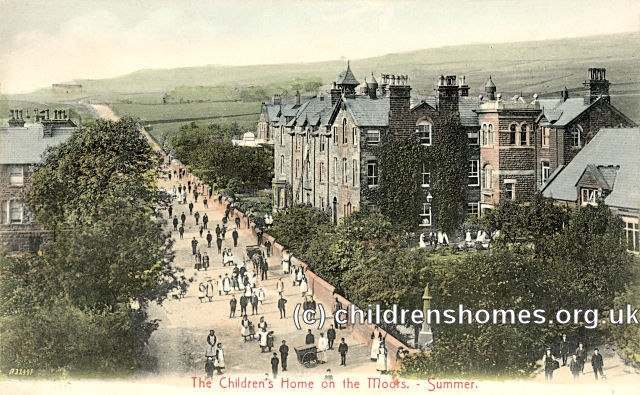
Main street (Wheatsheaf block at centre) at Edgworth Home, Bolton. © Peter Higginbotham
The beginning of the Home's long involvement in emigration began in 1873 when the first party of forty-nine children arrived at its newly established receiving home in Hamilton, Ontario.
In 1875, a Certified Industrial School was opened at Milton, near Gravesend in Kent. The School housed up to 160 boys aged 8 to 14 placed there by the courts for reasons such vagrancy or being in moral danger.
In 1880, an existing home was taken over at Ramsey on the Isle of Man after the death of its founder. Two years later, the Princess Alice Orphanage at Sutton Coldfield, near Birmingham, was a purpose-built 'cottage homes' development, eventually housing around 300 children. The main donor's stipulation that it be only for orphans made it the only home to have 'orphanage' in its name, and resulting in the charity becoming officially known as the Children's Home and Orphanage.
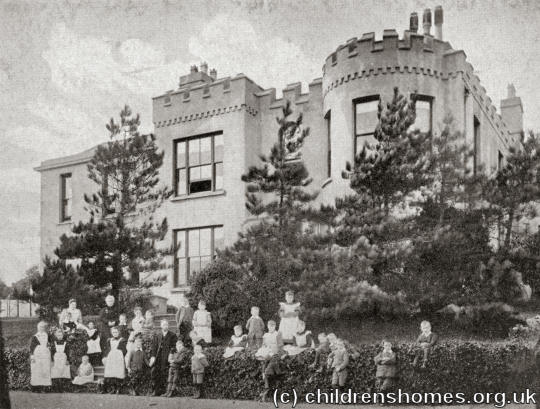
Ballacloan, Ramsey, c.1900. © Peter Higginbotham
Special care for convalescent children was made with the opening of the Alverstoke home in 1887. Further provision for convalescent and physically disabled children came with the Chipping Norton home in 1903.
The years leading up the First World War marked a major surge in growth, with three large homes being established at Frodsham in Cheshire (1903), at Bramhope near Leeds (1906), and at Harpenden in Hertfordshire (1913), the latter also becoming the headquarters branch of what from 1908 was officially known as the National Children's Home and Orphanage. A TB sanatorium was opened near to the Harpenden home site in 1910 and, in the same year, an existing home in Cardiff was taken over to become the charity's first property in Wales.
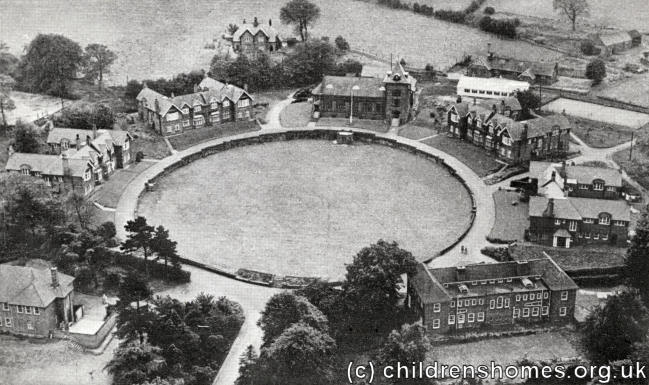
Newton Hall, Frodsham — aerial view from the north-east, date unknown. © Peter Higginbotham
Other than halting emigration to Canada, the First World War had little impact on the Home. Between 1909 and 1929, the number of branches doubled and the number of children being cared for rose by seventy-five per cent.
The steady expansion of the NCH needed to be matched by its fund-raising activities. Regular appeals were made to the public which invariably included a child's beaming face and statistics about the work the charity was doing, such as the advertisement below from about 1930.
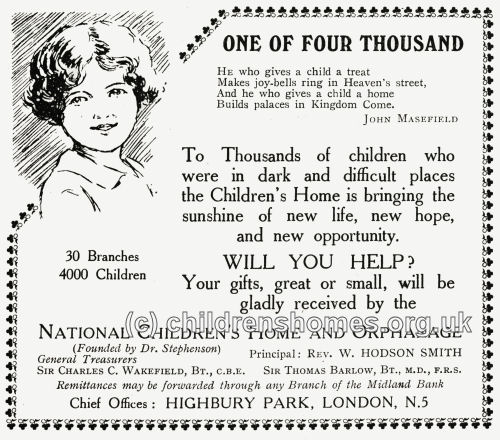
NCH fund-raising advertisment, 1930. © Peter Higginbotham
There were also more targeted schemes to encourage regular giving, such as the Birthday Society.
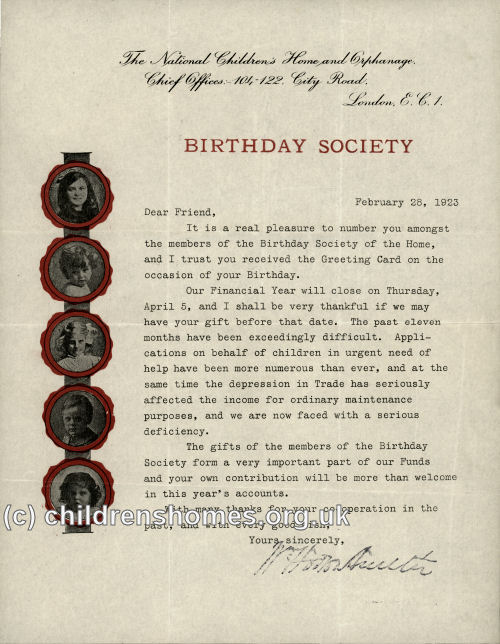
NCH Birthday Society mailing, 1923. © Peter Higginbotham
Except where indicated, this page () © Peter Higginbotham. Contents may not be reproduced without permission.


